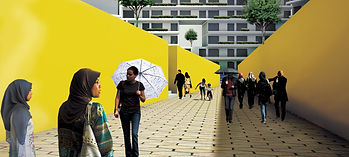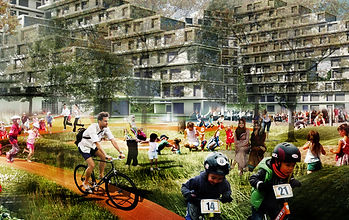CM HASIB CH
Graduate Architect / Designer

COLLECTIVE VILLAGE
Terrace housing has advantages in respect of cost and efficiency of land use, but the social features suffer. In a terrace housing estate, the road is public space that fronts each house and it is designed for the car rather than pedestrian. Hence, making it less suitable for social interaction and playing area for small children. The road is also a public domain, accessible for not only residents and their guest, but also to uninvited strangers and potential criminals.
by CM HASIB CH


I strongly agree that that, terrace house estate should has a ‘genuine sense of community’ with all the provisional communal facilities such as a multi-purpose hall, playground area and also space for other type of activities that can be held. Certainly people miss the sense of neighbourhood feeling that can be found in small towns and kampong where they are coming from.
I am trying to create a design that can promote collective lifestyle where the aim is for the people in the community can interact with each other. For example, creating a space that people in the community can crop their own food such as vegetables while at the same time can let their children play with one another in the same space which indirectly create a natural surveillance. The design is inspired by the sense of community that we can find in the village.
The idea was inspired by the most well-known Malaysian cartoon artist, Lat. Lat most notable artwork is ‘Kampung Boy’ that revolve around a pre-school child, named Lat. The artwork portray the life of Lat living in a village with his family and friends and it really catch my eyes in coming up with the design of this project. The culture and the interaction that can be seen in the artworks are really inspiring.
Design Theory




